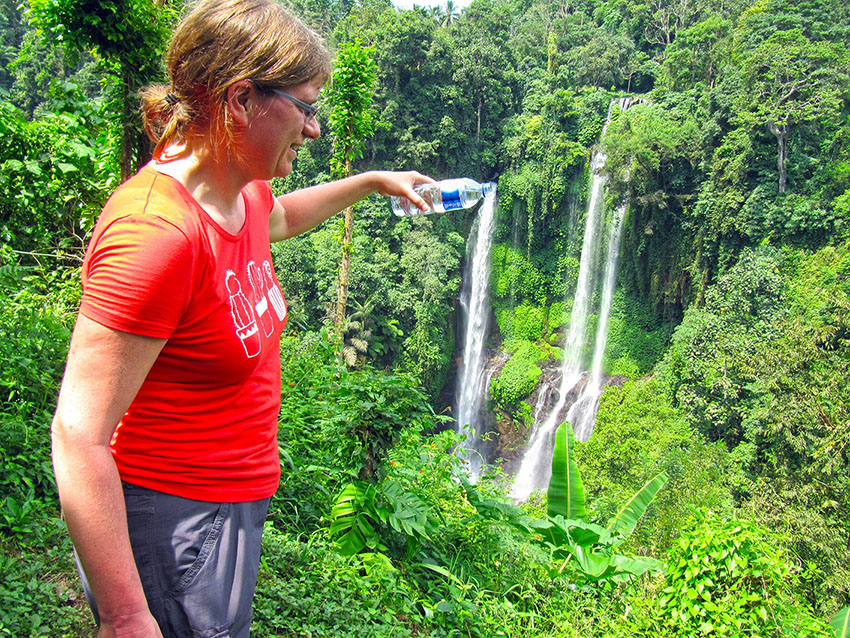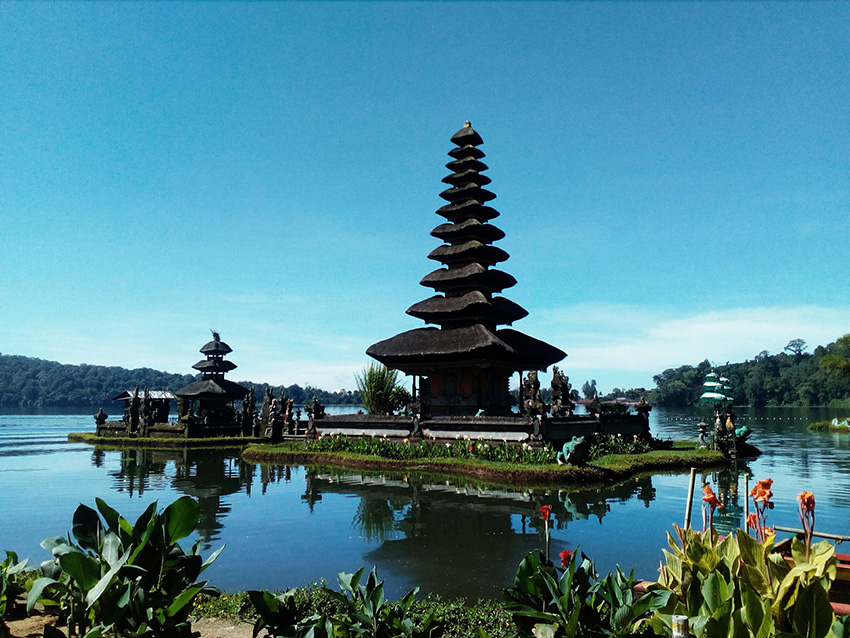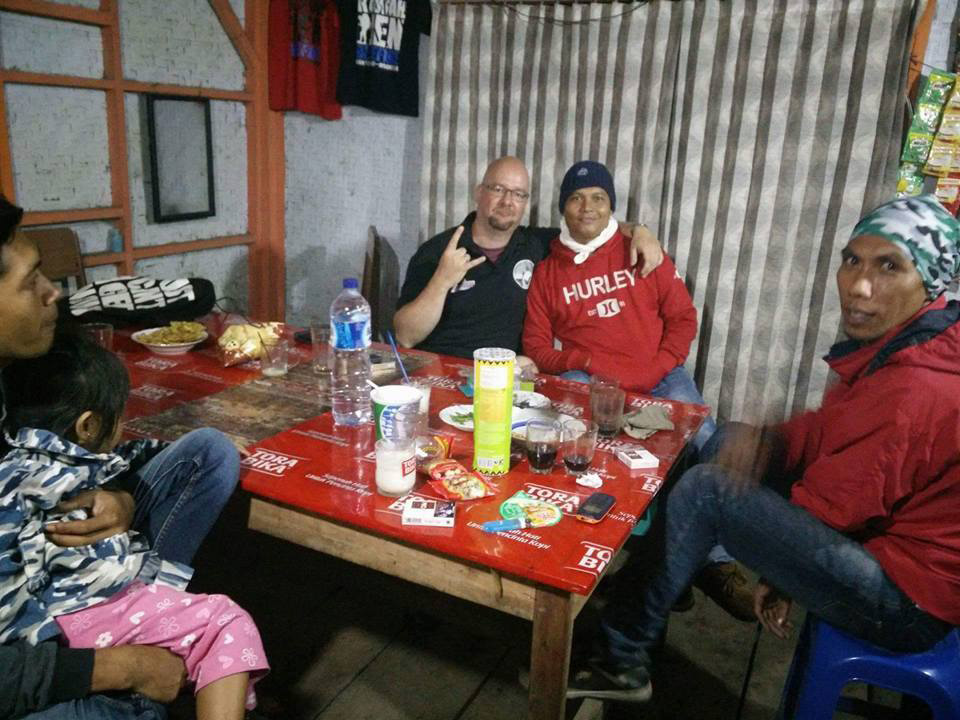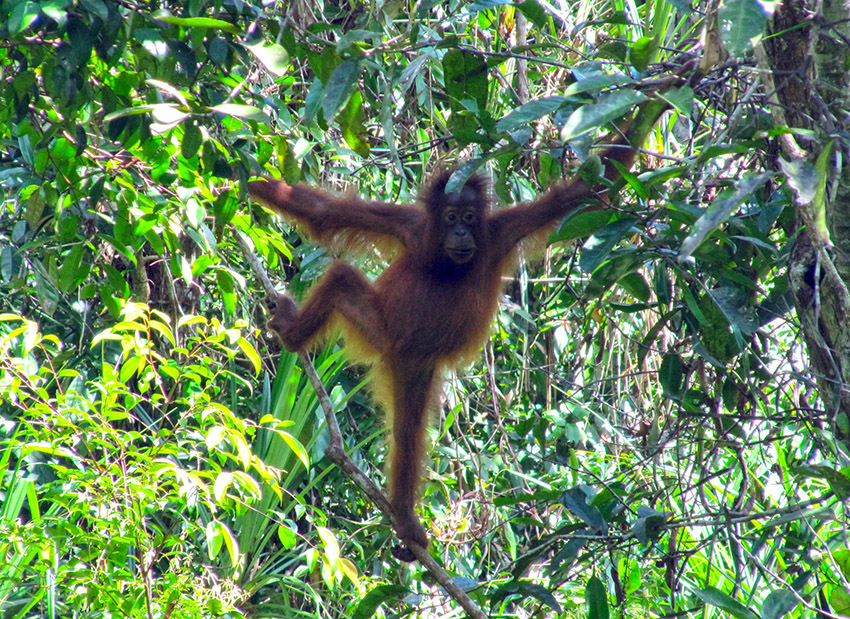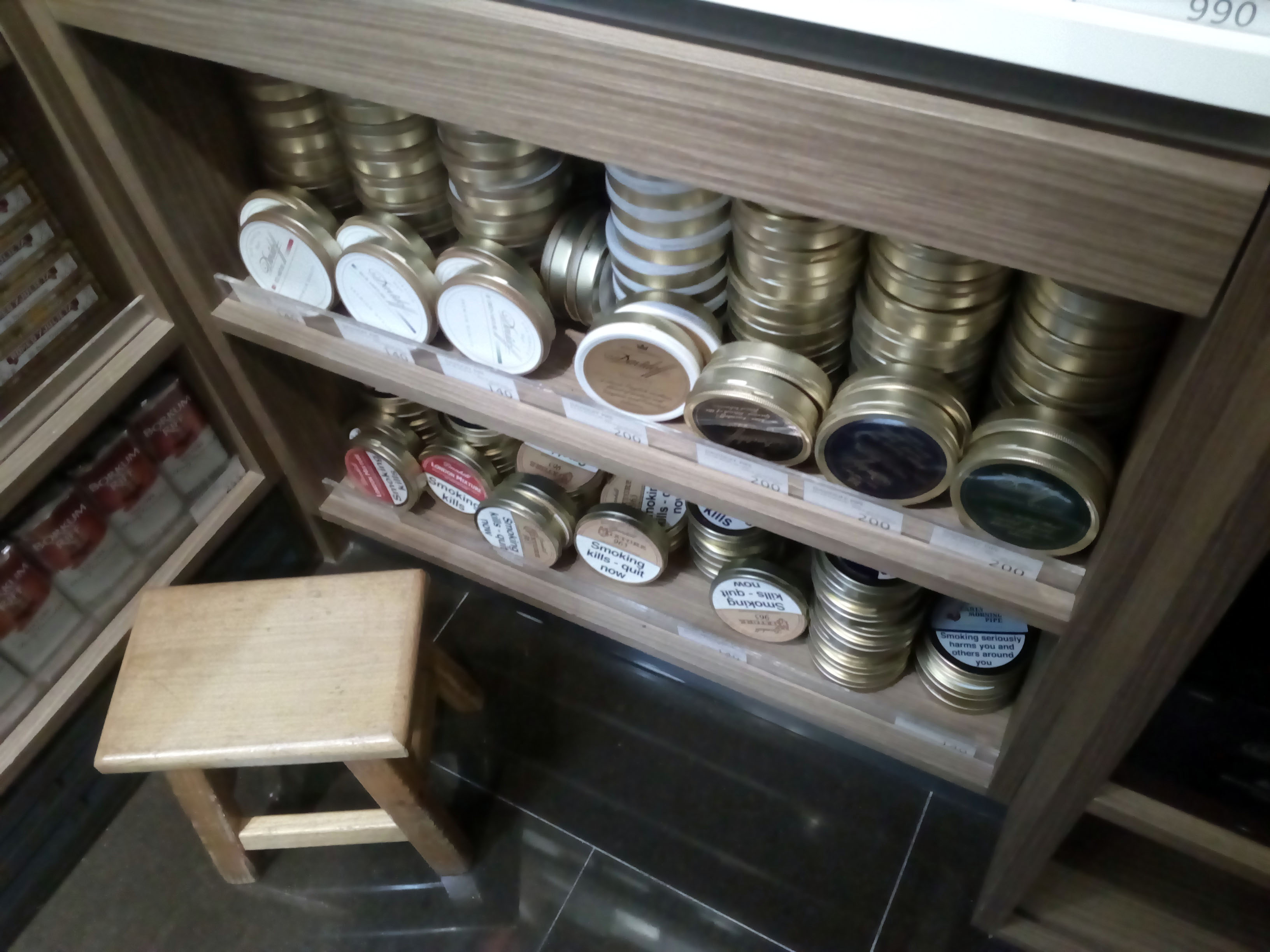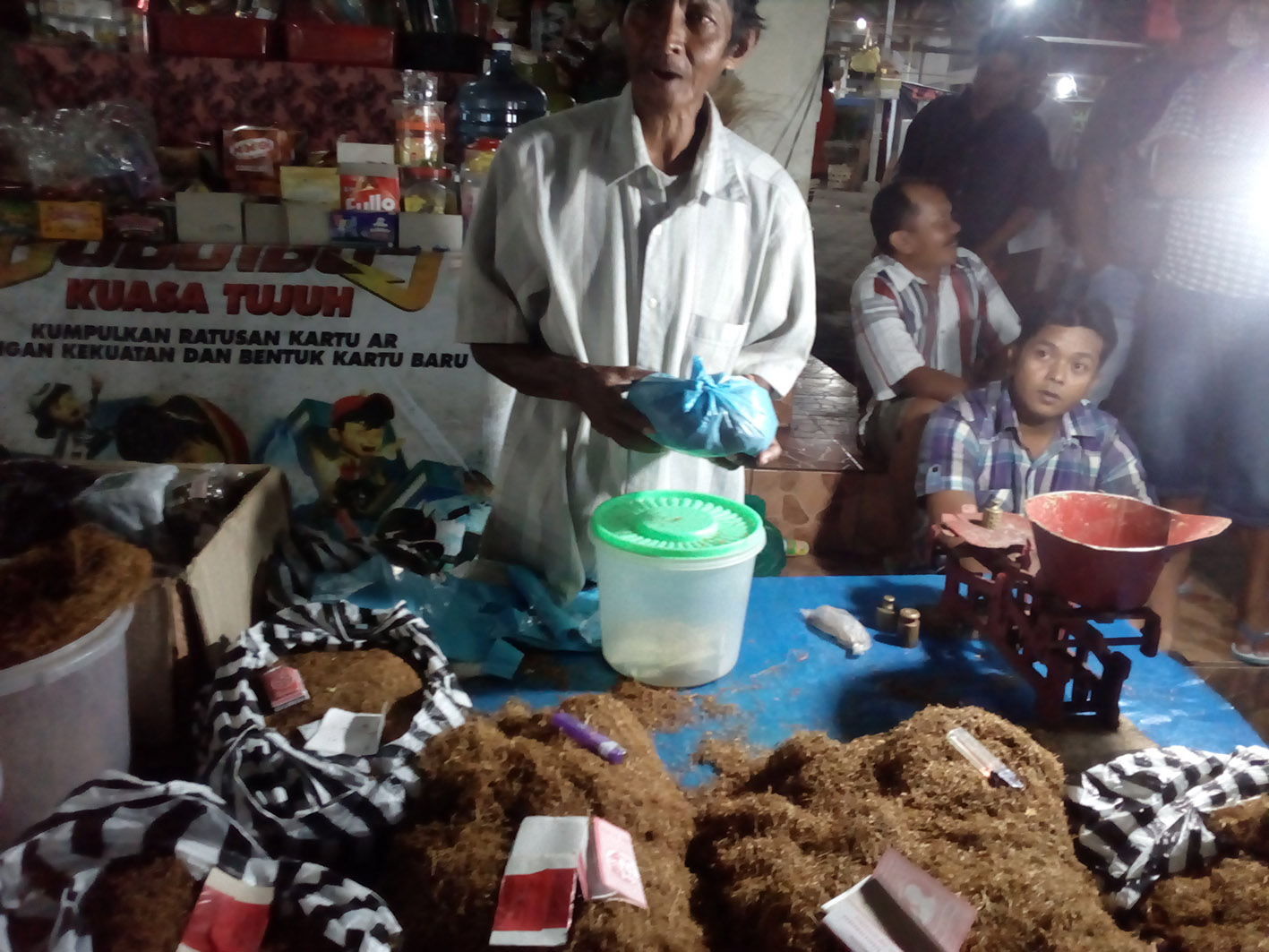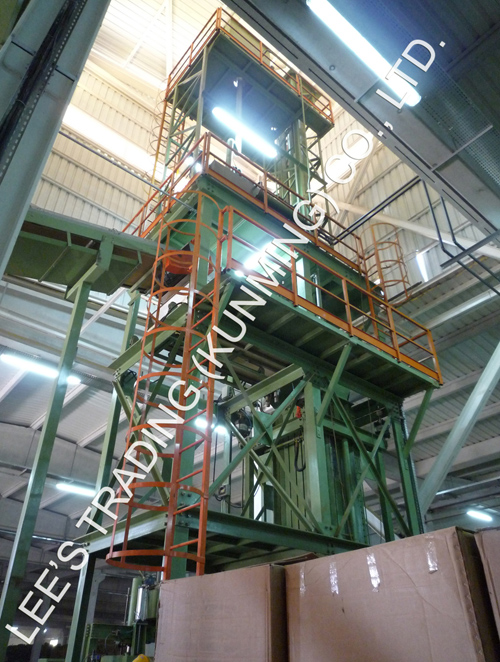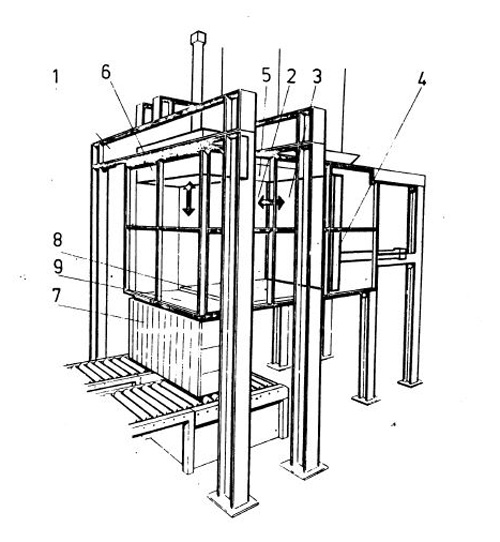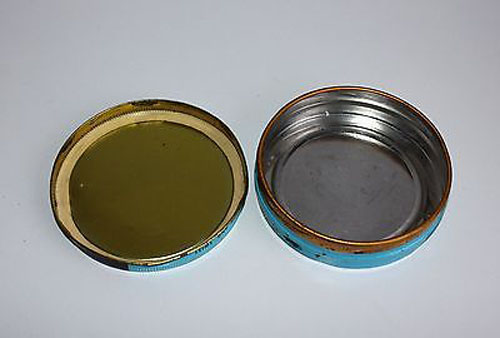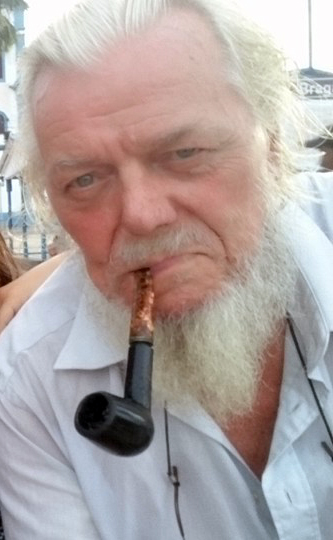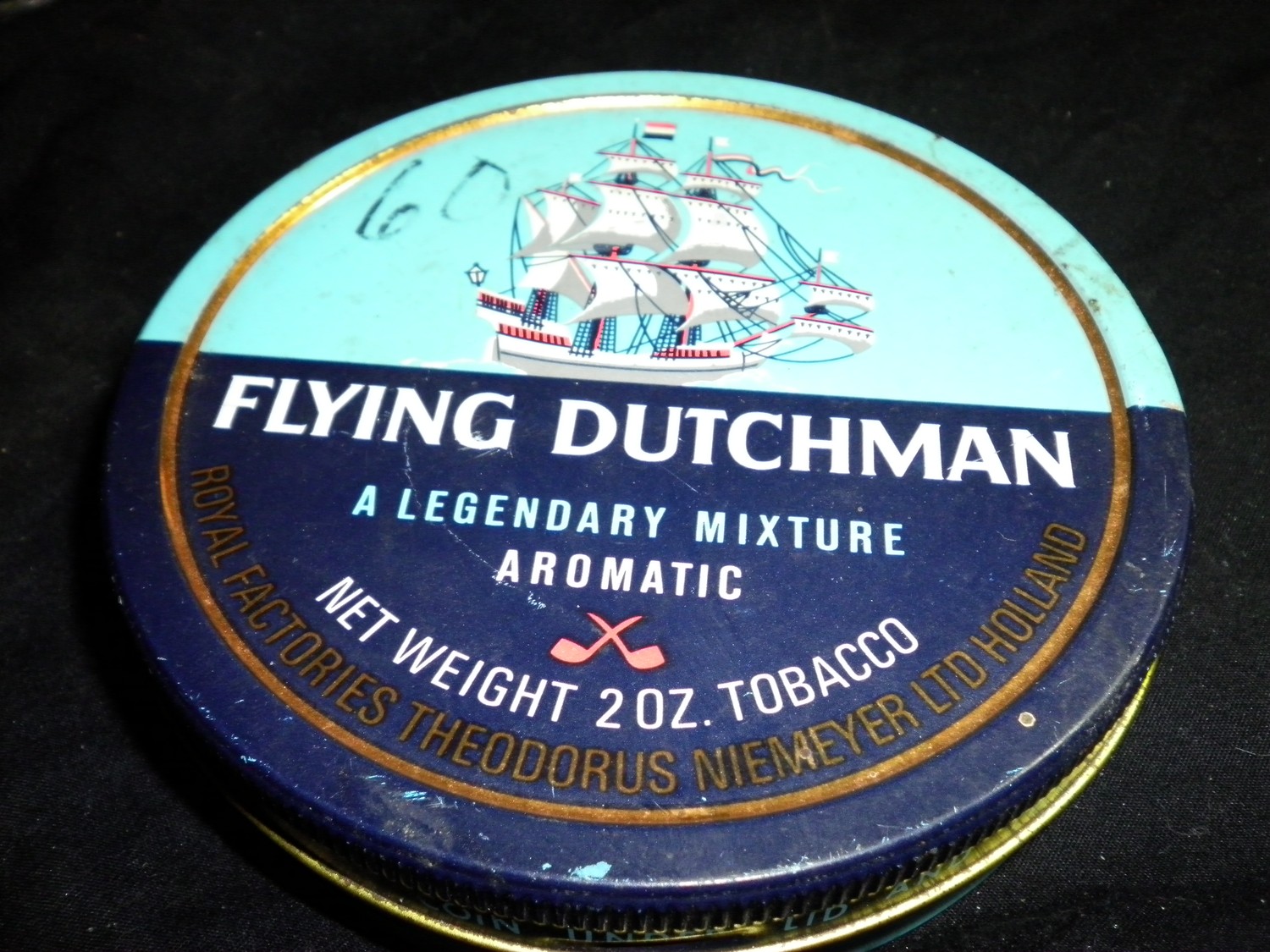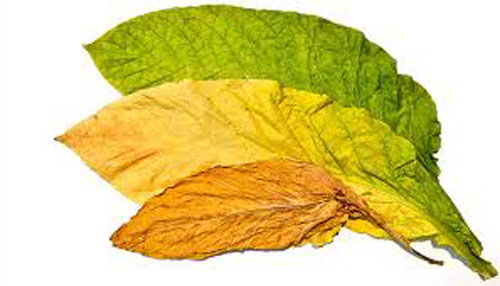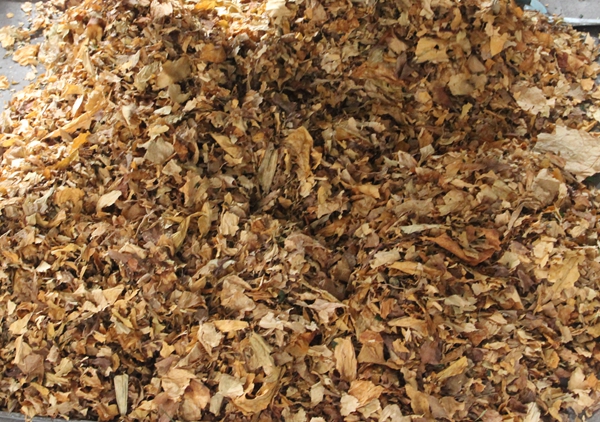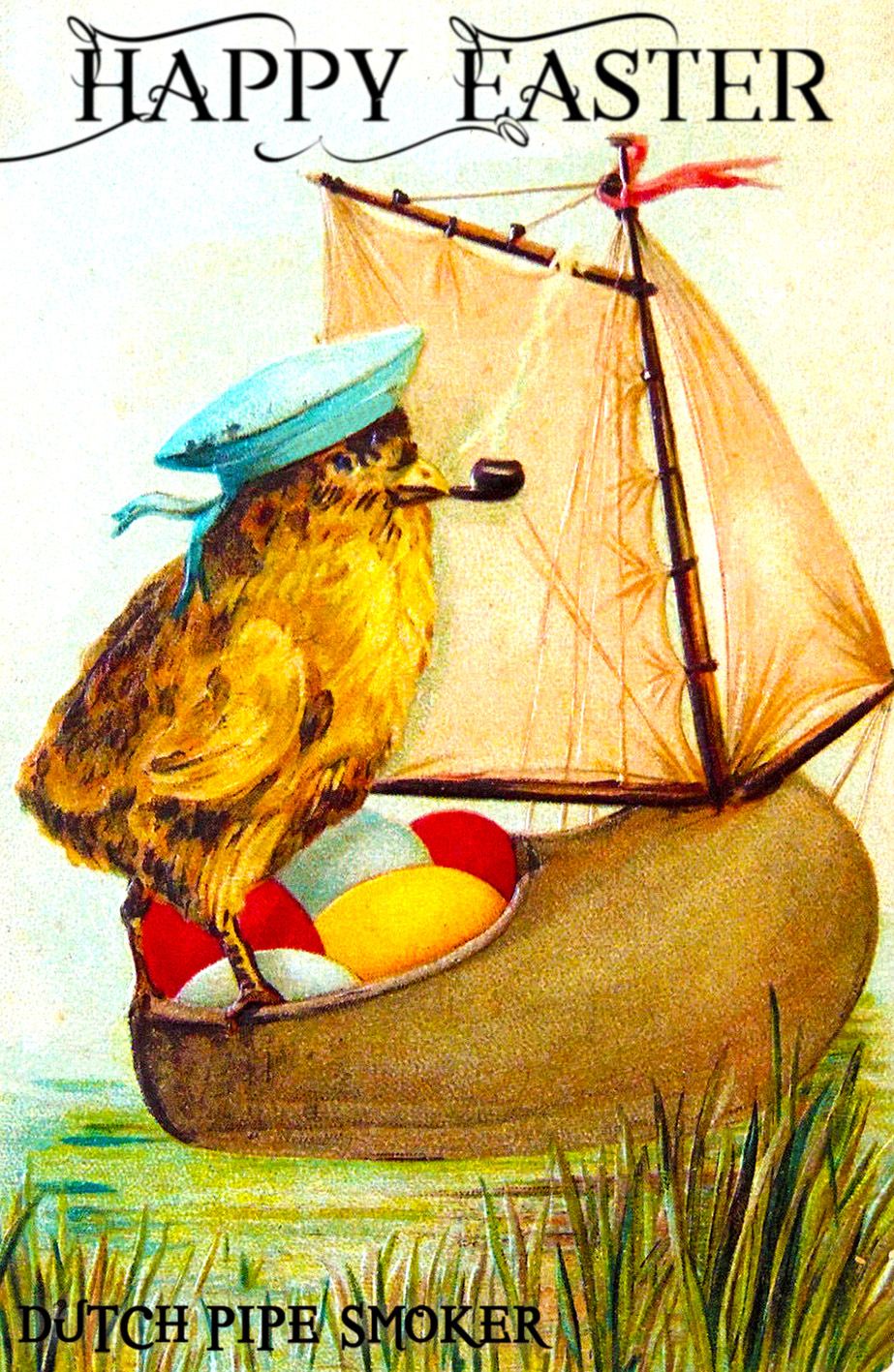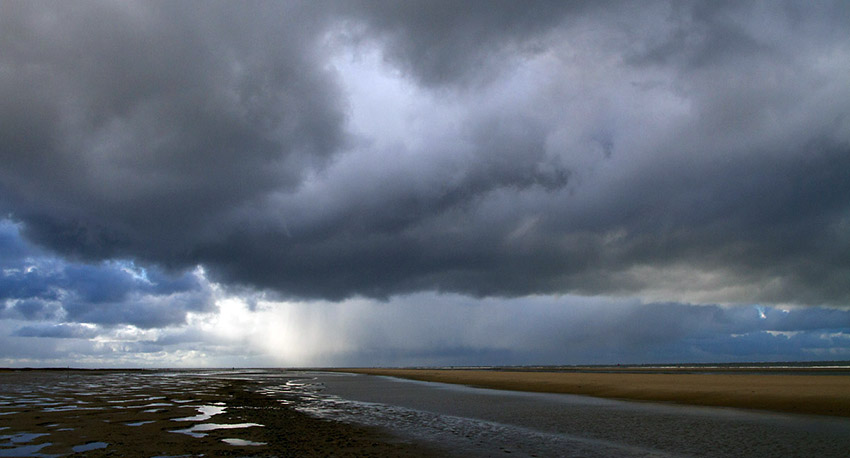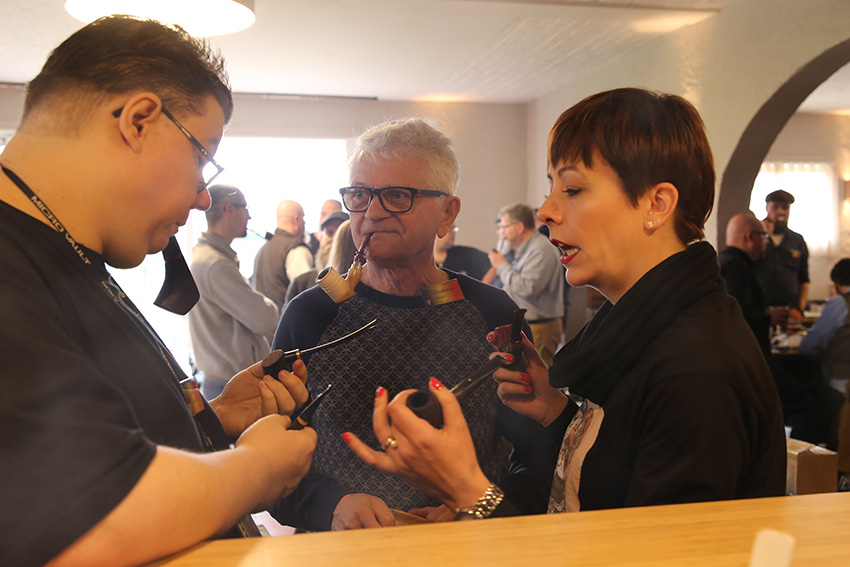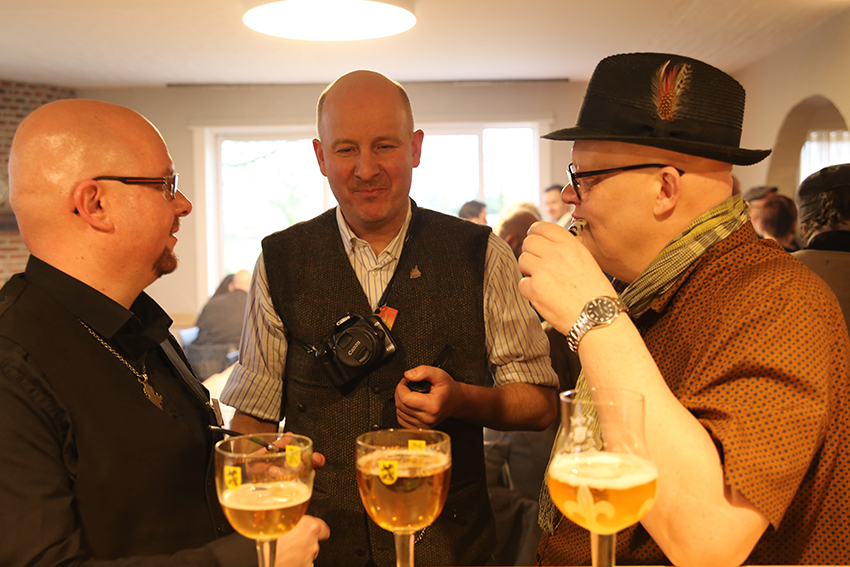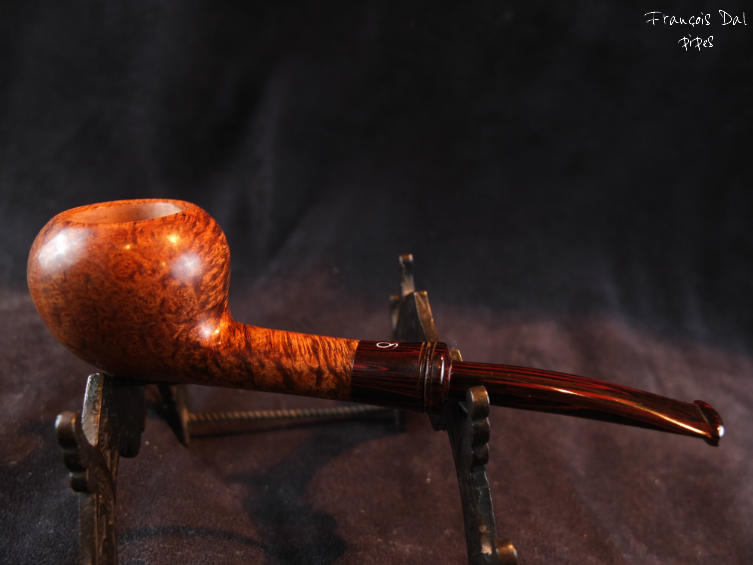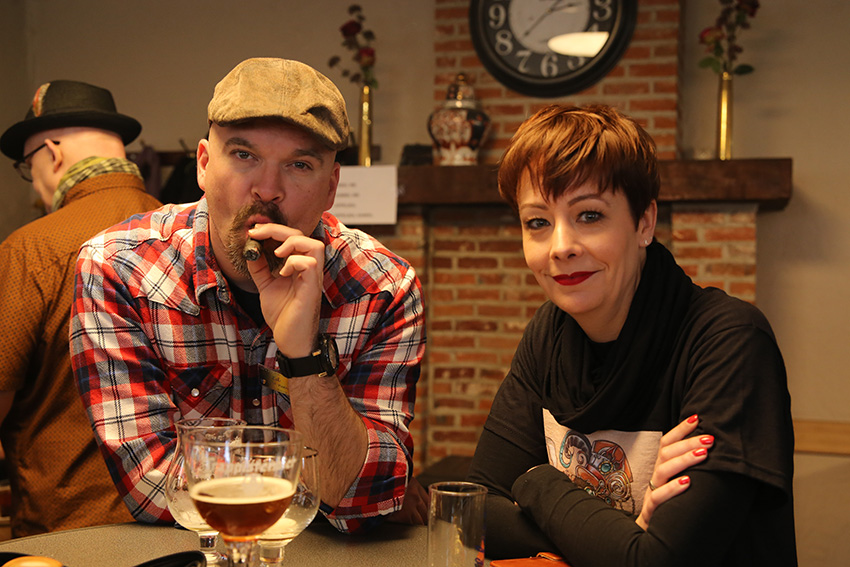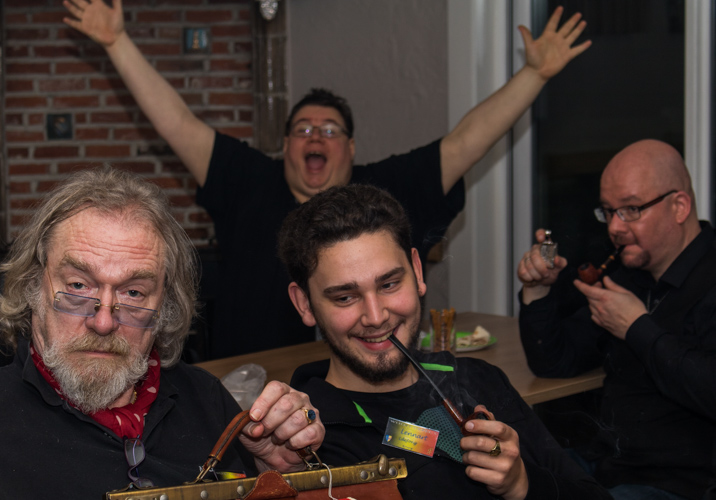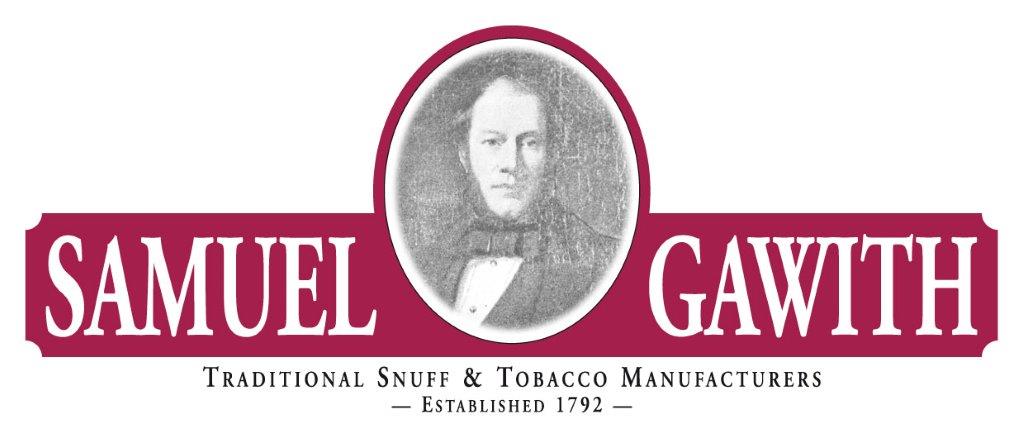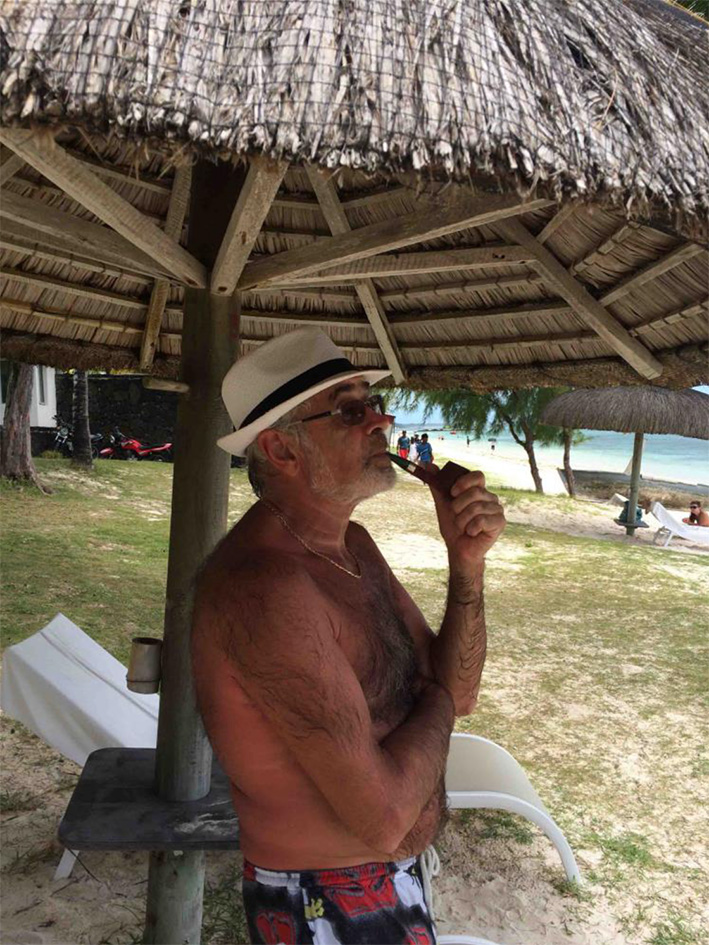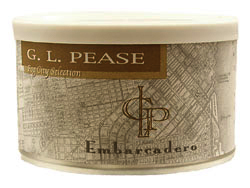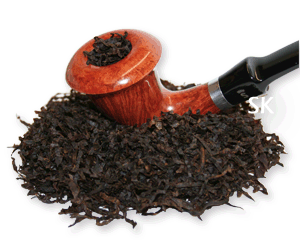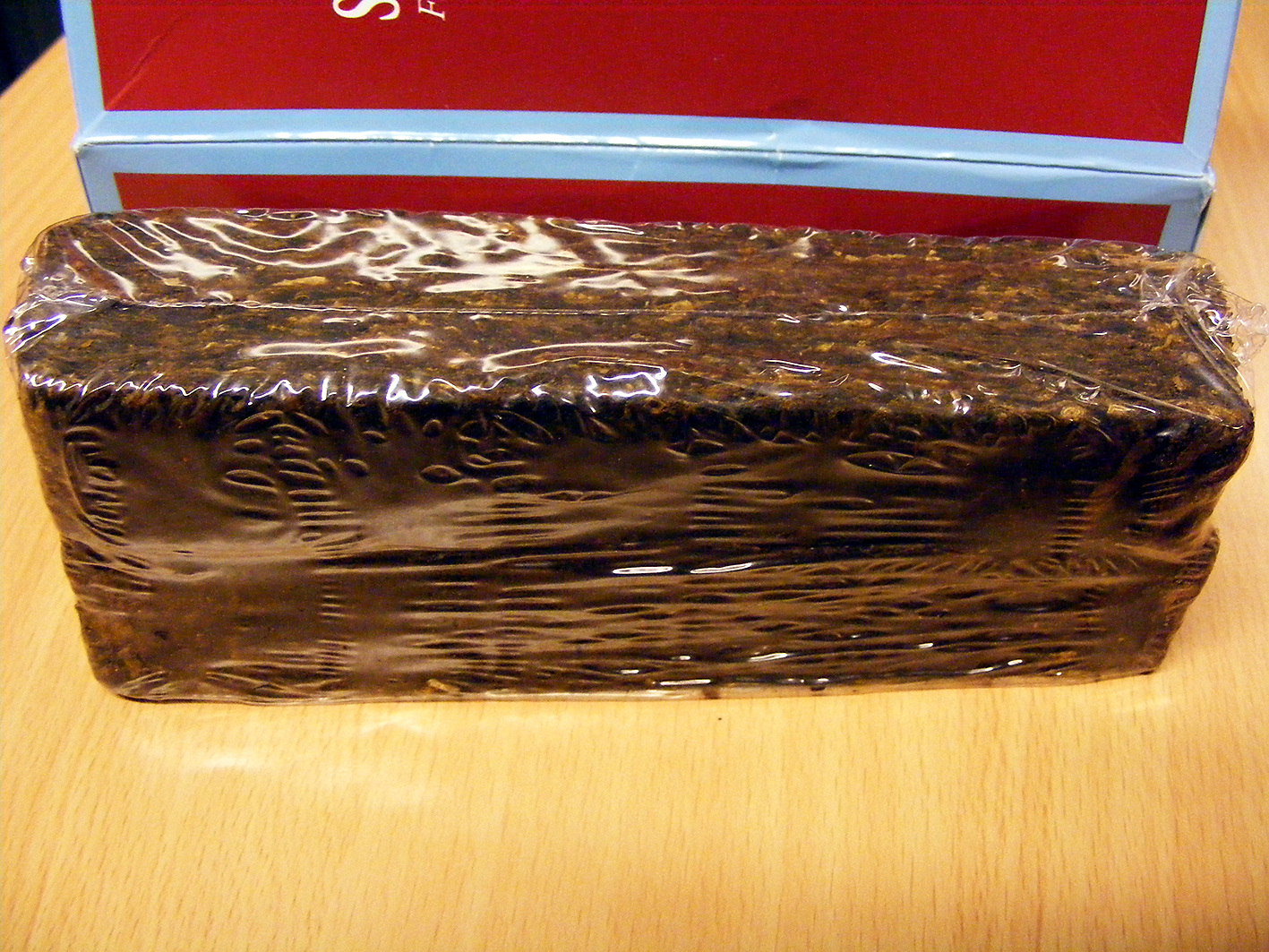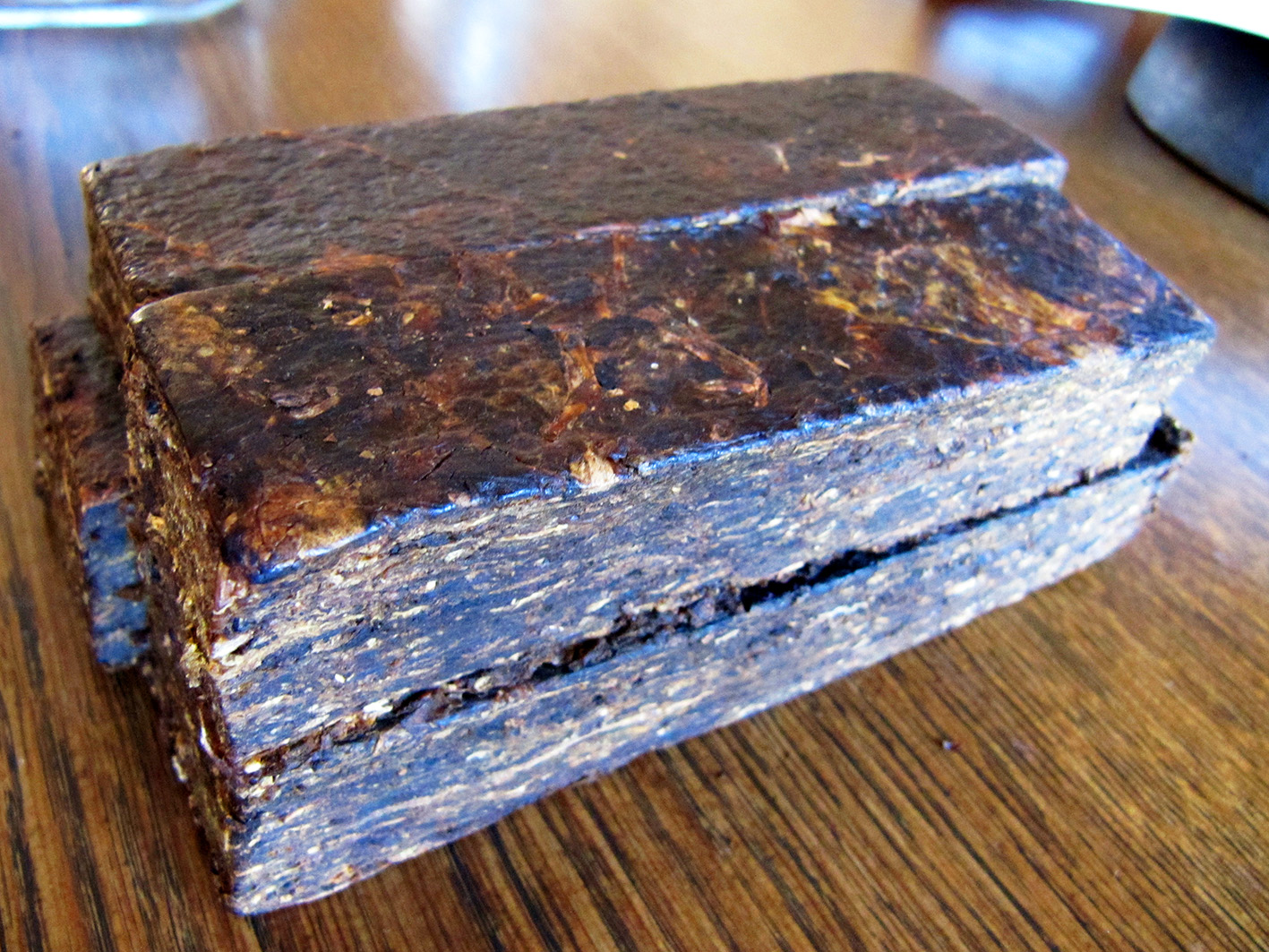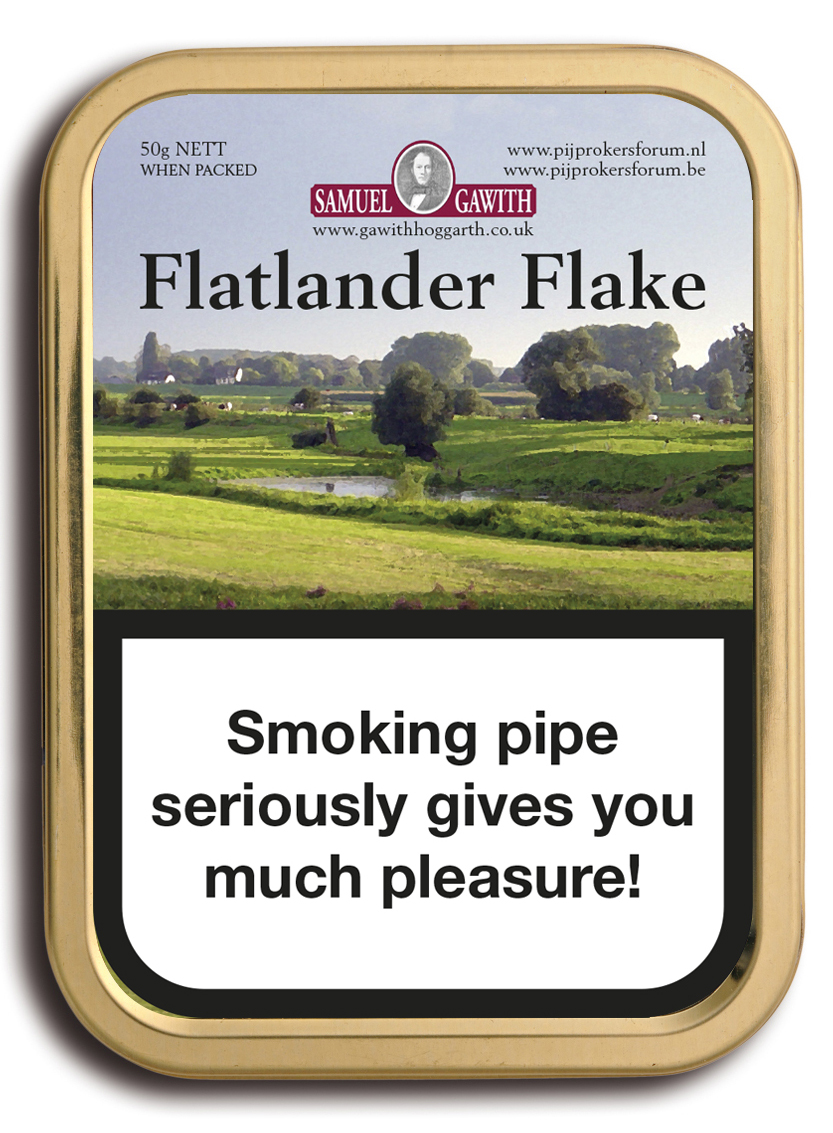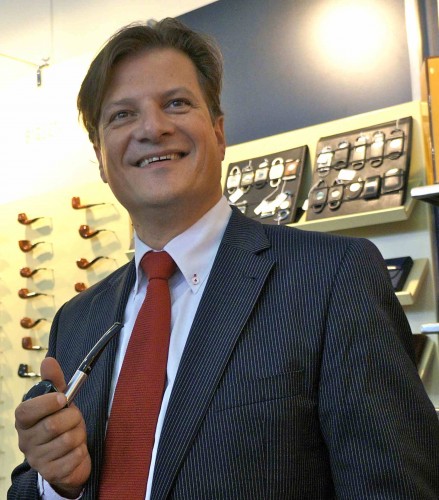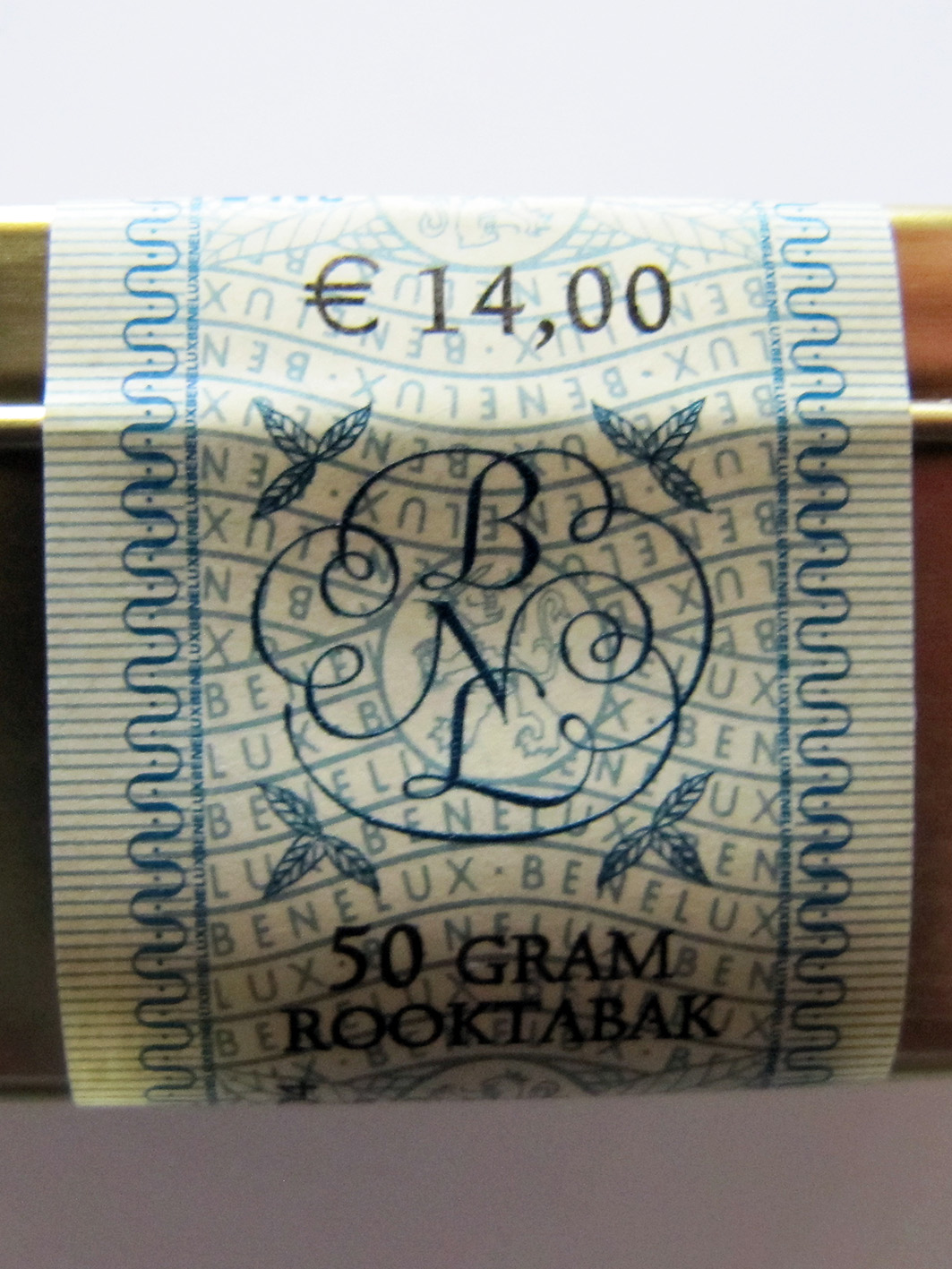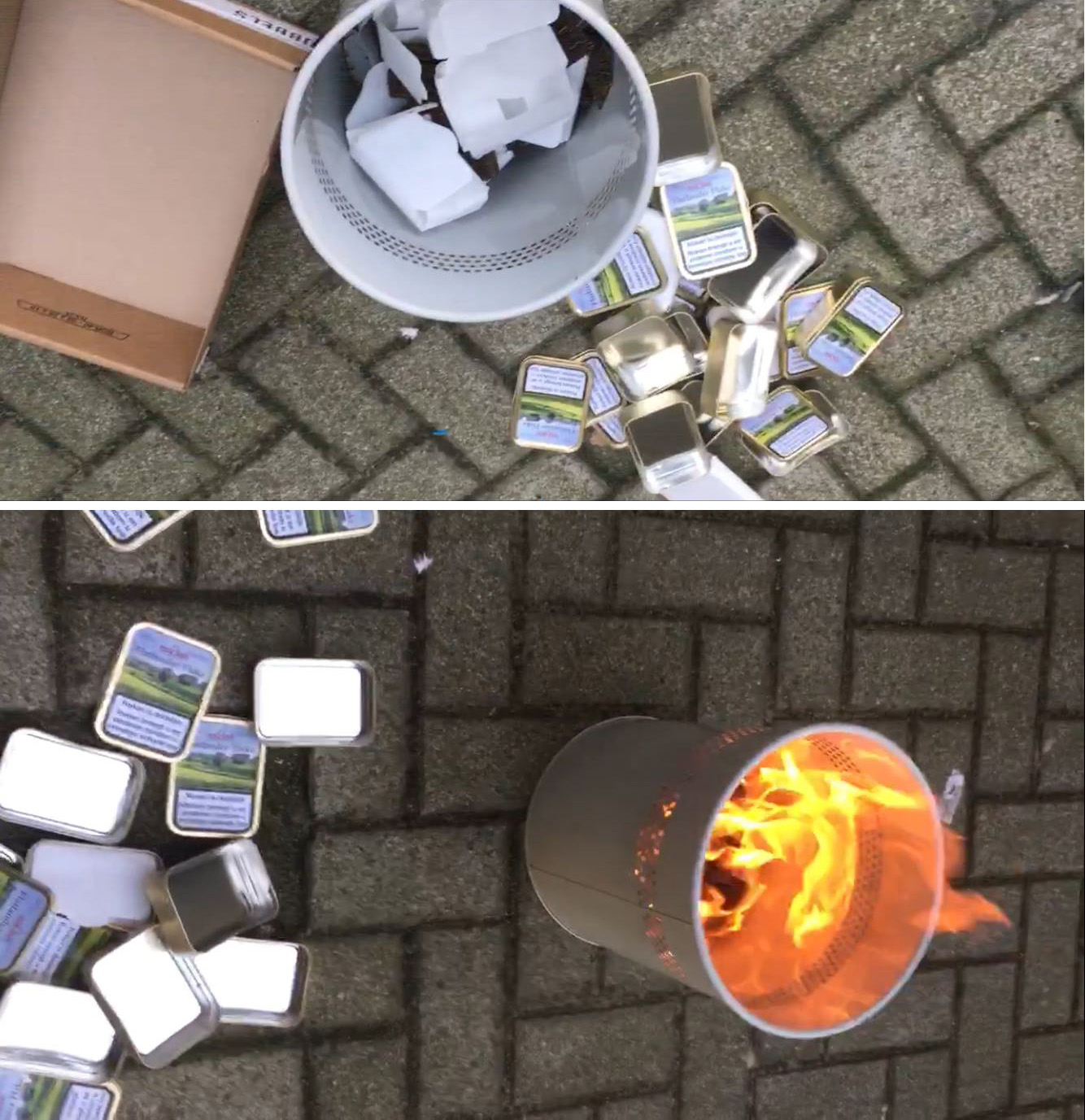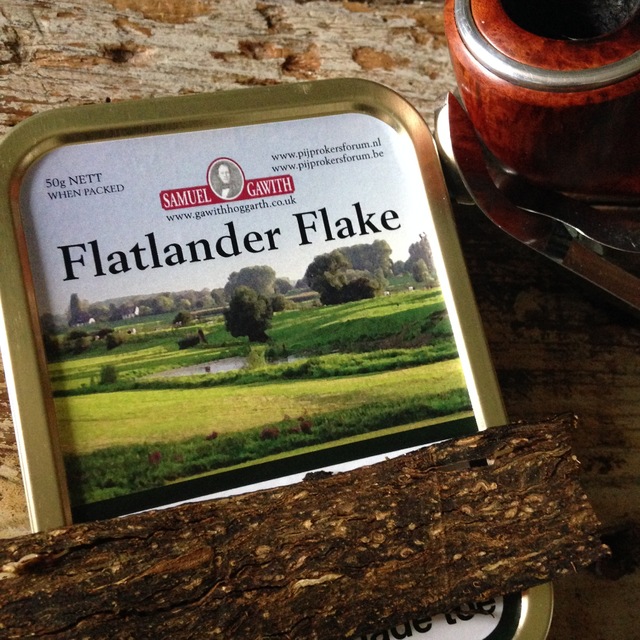See here for part 1.
It was time to begin with our scooter round-trip. Some people say that driving scooter on Bali is very dangerous. Bullshit! Like I previously said, the traffic in (South) Bali can be chaotic (imagine a four-lane way with as many cars and scooters that can fit beside each other) but compared to Western countries it goes slow. We rarely drove faster than 60 km/ph. You just have to use your common sense. Normally the scooters drive fully on the left and the cars to the right of them. But when it is busy or in a traffic-jam (and they have a lot of those) the scooters go wherever they can find a gap. After some riding we found out, when it is busy, try to follow a local to make your way past all the vehicles. Luckily we had one advantage: positive discrimination, we where white-skinned. Every Indonesian knows that foreigners can’t drive, therefore they try to avoid us like the plague. Which is very handy if you want a bit of space around you. Furthermore Indonesians are very polite drivers, no swearing, no inappropriate hand gestures, no irritation. I already miss it…
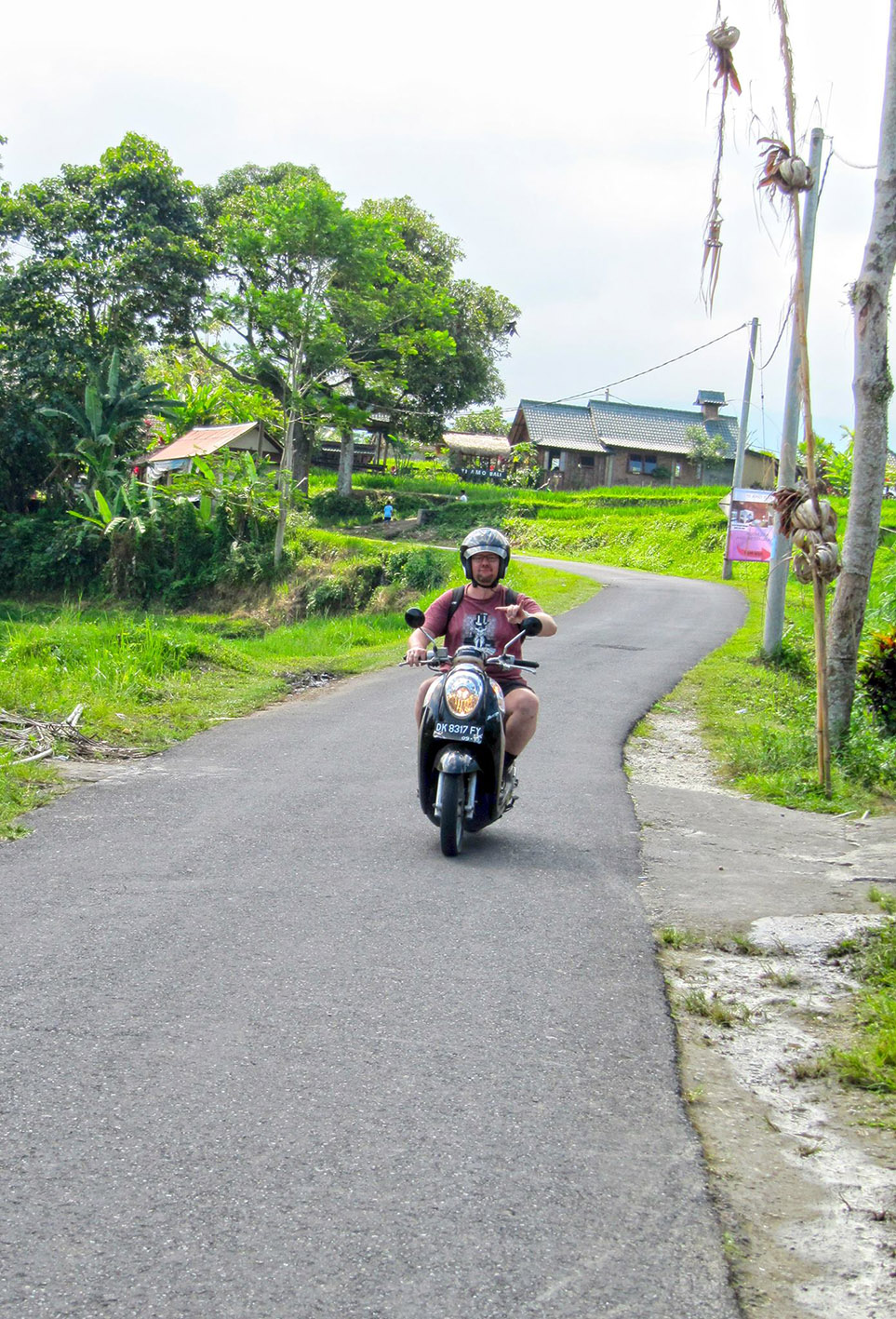 Also a lot of roads in Bali are made for scooters, not wide, if you drove there with a car it would be difficult. In any case I would not recommend driving a car simply because you miss a lot. Would you rather be in an air-conditioned box looking through a window or on a scooter in the wind, feeling the sunshine on your skin and experiencing all the sights and smells? It is so much fun driving through the villages, to see the colourful people, houses and temples, waving and saying “hallo” to children, smelling the incense from the daily offerings. Or riding over narrow roads through lush forest covered areas over large hills ending in spectacular green rice-terraces views. Besides, the Indonesians find it hilarious when they see a big white man on a scooter passing by. “Look! A sunburned foreigner trying to drive! Whahaha!!” When you leave the touristic South you’ll often find locals staring at you or taking pictures of you. Like the policemen we encountered in the North. Imagine a group of smiling police-officers making photos of you with their smart phones and friendly waving you goodbye after you showed them the correct documents while speaking a few words of Indonesian.
Also a lot of roads in Bali are made for scooters, not wide, if you drove there with a car it would be difficult. In any case I would not recommend driving a car simply because you miss a lot. Would you rather be in an air-conditioned box looking through a window or on a scooter in the wind, feeling the sunshine on your skin and experiencing all the sights and smells? It is so much fun driving through the villages, to see the colourful people, houses and temples, waving and saying “hallo” to children, smelling the incense from the daily offerings. Or riding over narrow roads through lush forest covered areas over large hills ending in spectacular green rice-terraces views. Besides, the Indonesians find it hilarious when they see a big white man on a scooter passing by. “Look! A sunburned foreigner trying to drive! Whahaha!!” When you leave the touristic South you’ll often find locals staring at you or taking pictures of you. Like the policemen we encountered in the North. Imagine a group of smiling police-officers making photos of you with their smart phones and friendly waving you goodbye after you showed them the correct documents while speaking a few words of Indonesian.
Navigating though Bali during the scooter trip was surprisingly easy. Since half a year I have a smart-phone (before that I had those simple unbreakable Nokia telephones that you can use as a brick for your house) and in Bali I had bought an Indonesian SIM-card so everywhere I went I had internet. Marcello advised me to download the Waze app on it. In essence it works the same as the Google Maps app only it uses less battery energy and internet data. I plugged my ear phones in the phone and when I was driving I would hear something like “Over 800 metres go left”, “Over 200 metres go left”, “Go left”. It worked perfectly! Later I discovered that I could also put my music on which would automatically go softer when Waze had to say something. I can tell you it is quite an experience to ride through tranquil villages while Death‘s Evil Dead is blasting in your ears. Another app I frequently used was the Bluebird one. If you ever need a taxi in Indonesia (because you don’t want to drink and drive), get a Bluebird. Indonesian taxi drivers are sadly well known for trying to scam you. Longer routes, not putting on the metre (Oh sorry, it’s broken.. Yeah right..) etc. Bluebird has none of this. You can order a cab with the app. Immediately you see which driver you are going to get with a number that corresponds with the one on the car. You also see a little map where you can follow your taxi so you know when it arrives. When inside the metre starts at 7,000 Rp. (about €0.50). Afterwards you get a mail in which you see the route you drove and the amount of money you paid. Ideal!
During the meeting with the Bali Tobacco Lovers group they had shown me a couple of pipes that were Indonesian made. There were some nice ones but nothing that really piqued my interest. In the mean time I had added some Indonesian friends to my Facebook when I saw that someone of them had liked a post of Ngurah Art Pipes. It was a picture of a beautifully sculpted Ganesha pipe. Woww, that is very, very nicely done, I thought to myself when I scrolled further along the page. Suddenly I saw what was to become my souvenir of this whole trip: a breathtakingly sculpted Boma pipe. Boma was first known as an evil demon. After death he was transformed into a benevolent spirit and guardian. His image is placed above and beside doors and windows to offer protection to the inhabitants and to maintain the fine balance between the forces of light and dark in the universe. Immediately I messaged Ngurah if the pipe was still available. Soon I got a reply, unfortunately it was already sold but he could make a new one. Yesss!!! The costs would be $100, expensive for Indonesian standards but pretty ok for Western. I did not want to haggle so I said that he could go ahead. I had already planned to attend yet another Bali Tobacco Lovers meeting on my last evening in Bali and asked him if he could come there and have the pipe finished. No problem.
I will give you now what were for us highlights of the scooter round trip. First nature-wise. Bali has a lot of stunning waterfalls which you can visit. We went to the jaw-dropping Tegenungan and Sekumpul waterfalls. Both fully accessible but I warn you, you have to be in a pretty good shape because a lot of climbing stairs and walking over rocks is involved to get there. Hiring a guide at Sekumpul is advisable, you learn a lot more about the environment, support the local people and you make sure you don’t break your leg (there have been cases..). Further there are natural hot springs in Bali which are good for all kinds of ailments. We visited the Banjar hot springs, I cannot describe how good it feels to relax in the warm water. At Lovina in the North you can spot dolphins. There are trips at 6:00 and 8:00 am, take the last one because then it is less crowded with boats and you can better see the jumping and twirling aquatic mammals. If you want to dive or snorkel, go to Menjangang Island, one of the most beautiful places in the world to do that. We only snorkelled but I will never, ever forget the magnificent coral reefs and colourful fish. And last but not least you have the majestic rice-fields all over the island. Some of the most beautiful are at Jatiluwih with stunning views.
Eating-wise Bali is also a top destination, I already told you about the warungs. Further I can recommend eating seafood on Jimbaran beach. There are a lot of restaurants there but Roman Cafe is one of the best and with reasonable prices. You can choose which fish you want and then it is grilled above a fire of coconut shells and served with rice and an array of tasty sauces. And if you say that you stay at Home Bali Home they put you in front, right at the water. We went for mussels, squid-rings and Barramundi. To eat there on the beach with your feet on the sand while the sun is setting, just magical. A lot of restaurants are also to be found on Bali. Our favourite was Dapoer Chef Wayan, I admit, I am no lover of vegetables but the way the chef made them.. Wowwww… Ambrosia for my taste-buds. And if you ever on Bali have the opportunity to eat a proper Indonesian rijsttafel, please do so, you won’t regret it.
I think it is hard to find a better destination as Bali culture-wise. Balinese Hinduism, the main religion there (the rest of Indonesia has Islam), makes sure of that. It is ingrained in every aspect of daily life; the small and big rituals and temples, the colourful clothes, the offerings etc. For example everywhere across the island, on streets, before shops, on crossroads you see little palm-leaf baskets called Canang sari. In those are things like betel leaf, lime, gambier, prestige, betel nuts and yes, tobacco. Incense sticks are burned with them and they can be topped of with some money but I have also seen things as a lollipop. It is ok to walk on them, sometimes they are really in the way.. The most important, largest and holiest Hindu temple is Pura Besakih and is truly a sight to behold. Built on six levels and perched nearly 1000 meters up the side of mount Gunung Agung it is an extensive complex of 23 separate but related temples. For years tourists got swindled and harassed there but since this year that is all forbidden. The entrance now is 60,000 Rp. and a guide is included, who you don’t have to take. If you take him, give a tip afterwards. It was a bit cloudy when we were there but if the sky is clear you have breathtaking views. Unfortunately you can’t see everything if you are not of the Hindu religion but at least you can take a peek through the gates. Another stunning temple is Pura Ulun Danu Beratan, a so called floating temple because if the water in lake Beratan is high enough (and it luckily was when we were there) it seems to, indeed, float. Other great places to go are the mini-Borobudur, Brahma Vihara-Arama and the luscious royal water garden of Tirta Gangga where you can walk across the water on small stepping stones.
During the scooter round trip we also had an excursion to the Kawah Ijen volcano in East Java. The idea was to climb it at night because then the present sulfur makes for an almost magical light show. We went there in the evening by a ferry which only took about 45 minutes thank the heavens. This because the sea was pretty rough and I got sea-sick. Really a shame because Ellen and I were talking to a friendly Javanese English teacher who had just made an excursion with his class when I started not feeling well. When we arrived I had to pose on several pictures with his students with my sea-sick head.. Solid ground, I thought I was saved, just a little ride in the car and then we will be at the damn volcano. A nice woman, Dewi, waited for us with her husband and they took us there. A 1 hour long ride in the dark with lots of twists and turns followed. So I also got car-sick. When we arrived the weather was horrendous, rain was pouring down and it was misty. I was so ill that I decided to stay at the warung at the base of the volcano but Ellen went for it together with a group of other tourists and guides. Fortunately I soon felt better and had a splendid night together with some Indonesians who were also there. I had to laugh a bit, they were shivering from the cold, dressed in long pants, hats and thick sweaters while I was perfectly ok sitting in just my shorts and shirt. In the morning Ellen came back, she had not seen much of the “magical” sulfur light and sunset but was nonetheless proud of her achievement.
 Back at Home Bali Home after the scooter round trip I was smoking a pipe when the lovely daughter of Marcello, Jade, suddenly approached me. “What are you doing? What is that?” she asked with a curious voice. A bit surprised that she didn’t knew what I did I answered that it was a pipe, that you smoke tobacco from it, that you don’t inhale, that you not get the same addiction as with cigarettes (although I urged her to never ever begin smoking), that for me it is almost meditative etc. She liked the smell of the Vooroogst tobacco in the tin and was fascinated by the smoke coming from my corncob pipe (is it really made out of corn??). We talked a bit further about her life, school, her dreams and I came to the conclusion that she was a bright young lady with no doubt a promising future.
Back at Home Bali Home after the scooter round trip I was smoking a pipe when the lovely daughter of Marcello, Jade, suddenly approached me. “What are you doing? What is that?” she asked with a curious voice. A bit surprised that she didn’t knew what I did I answered that it was a pipe, that you smoke tobacco from it, that you don’t inhale, that you not get the same addiction as with cigarettes (although I urged her to never ever begin smoking), that for me it is almost meditative etc. She liked the smell of the Vooroogst tobacco in the tin and was fascinated by the smoke coming from my corncob pipe (is it really made out of corn??). We talked a bit further about her life, school, her dreams and I came to the conclusion that she was a bright young lady with no doubt a promising future.
The following day we left for Kalimantan to go on a boat and see some orang-utans. At the end of the afternoon we arrived and our guide, Nisa, was already waiting for us at the airport. At first I thought that we had a small girl of about 16 as a guide, but that could not be, she had to be at least 18, 20. When we went on board of the klotok I could not resist asking her age. I almost fell overboard from surprise when she told me: 33. The klotok was more luxurious than I expected. The upper deck was for Ellen and me and included a table with some chairs, a hammock, two mattresses (which were put together in the evening so we could sleep on them with a mosquito net above it) and on the front 2 deck-chairs. We even had a Western style toilet and hot shower! The deck below was for Nisa, the captain, the helmsman and a little girl with her mother, the cook. Who could by the way create fantastic dishes! We were surprised at the quality of the copious lunches and dinners she made for us in the tiny kitchen. The klotok trip was just fantastic, sailing on a clear river that got smaller and smaller right through the tropical rainforest while spotting wild animals. We saw amongst others gibbons, a hornbill and proboscis monkeys. Suddenly Nisa became very enthusiastic and pointed to the side of the river. There, between some trees was a baby orang-utan, curiously showing itself to us. One of my highlights of the Kalimantan journey. That and waking up early in the morning with the sounds of the jungle, precisely like on one of those CD’s! By the way, at the hotel we had in Pangkalan Bun we could really notice that Indonesia in general is a smoker friendly destination. To my amazement there were no no-smoking rooms available and you could smoke anywhere (even in the breakfast room the next morning).
 After we came back from Kalimantan on our last evening in Bali I had one more place to go to: Kopi Zeen to again meet the Bali Tobacco Lovers group. When I arrived I already saw Ngurah sitting. “I think you have something for me.” I said to him with a grin. At which he produced the stunning Boma pipe he had made for me. I think I could not stop smiling while I closely examined it. The craftsmanship and level of detail, wowww… He certainly earned his money. Ngurah also showed me some other pipes he made, skull pipes but also normal ones, all made from exotic woods. By the way, mine was cut from sapodilla wood, never heard of it but it smokes just fine. I was also delighted to finally meet Handoko, he even knew some Dutch words! It turned out that he is a leather craftsman, he showed me some pictures of the beautiful things he made. So soon I will give him a order to make a new pipe-bag for me. When I was talking to one of the members I sadly heard that Indonesian master-blender Punakawan recently had died during my stay in Bali. Such a shame, also because I was going to buy some of his blends. Another member had a tin of Squadron Leader, ah, finally some good ol’ latakia. Vooroogst is nice but sometimes.. The rest of the evening was wonderful again and time flew away. When I was about to leave the members presented me a cool Bali Tobacco Lovers t-shirt and Monoss wanted to give me a giant sized bag (I think a kilo or more!) of pipe-tobacco. I had to kindly refuse the latter, not because I did not want it but because of the damn customs office in The Netherlands. I can only import 100 grams and I already had the Java tobacco..
After we came back from Kalimantan on our last evening in Bali I had one more place to go to: Kopi Zeen to again meet the Bali Tobacco Lovers group. When I arrived I already saw Ngurah sitting. “I think you have something for me.” I said to him with a grin. At which he produced the stunning Boma pipe he had made for me. I think I could not stop smiling while I closely examined it. The craftsmanship and level of detail, wowww… He certainly earned his money. Ngurah also showed me some other pipes he made, skull pipes but also normal ones, all made from exotic woods. By the way, mine was cut from sapodilla wood, never heard of it but it smokes just fine. I was also delighted to finally meet Handoko, he even knew some Dutch words! It turned out that he is a leather craftsman, he showed me some pictures of the beautiful things he made. So soon I will give him a order to make a new pipe-bag for me. When I was talking to one of the members I sadly heard that Indonesian master-blender Punakawan recently had died during my stay in Bali. Such a shame, also because I was going to buy some of his blends. Another member had a tin of Squadron Leader, ah, finally some good ol’ latakia. Vooroogst is nice but sometimes.. The rest of the evening was wonderful again and time flew away. When I was about to leave the members presented me a cool Bali Tobacco Lovers t-shirt and Monoss wanted to give me a giant sized bag (I think a kilo or more!) of pipe-tobacco. I had to kindly refuse the latter, not because I did not want it but because of the damn customs office in The Netherlands. I can only import 100 grams and I already had the Java tobacco..
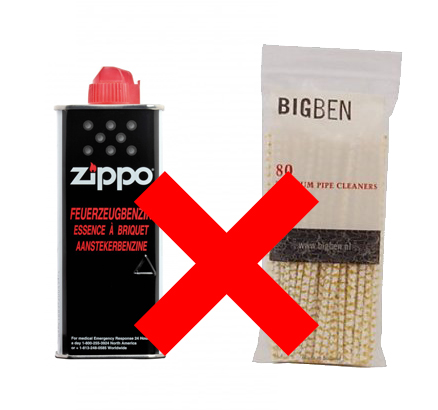 Just before we went to the airport the next day Marcello suddenly produced my hat, which I thought was thrown away. Someone had put it on a place he hadn’t searched before. I silently thanked the Buddha statue. The flight home unfortunately went a little less smooth. At the Ngurah Rai airport a customs officer noticed the Zippo fuel in my hold baggage. I tried to play the dumb tourist but he did not fall for that, I had to leave it behind. And in Hong Kong a stern female customs officer wanted to look into my hand luggage because the scanner beeped. She searched and searched and finally showed me a pack of pipe-cleaners and asked what that was. Damnit, those things have an iron wire.. Fortunately a male colleague of her saw me sweating and explained the purpose of them after which I could go on. Ellen angrily hissed to me “A man and his hobby….” Luckily the rest of the journey went well.
Just before we went to the airport the next day Marcello suddenly produced my hat, which I thought was thrown away. Someone had put it on a place he hadn’t searched before. I silently thanked the Buddha statue. The flight home unfortunately went a little less smooth. At the Ngurah Rai airport a customs officer noticed the Zippo fuel in my hold baggage. I tried to play the dumb tourist but he did not fall for that, I had to leave it behind. And in Hong Kong a stern female customs officer wanted to look into my hand luggage because the scanner beeped. She searched and searched and finally showed me a pack of pipe-cleaners and asked what that was. Damnit, those things have an iron wire.. Fortunately a male colleague of her saw me sweating and explained the purpose of them after which I could go on. Ellen angrily hissed to me “A man and his hobby….” Luckily the rest of the journey went well.
I had an absolutely fantastic holiday and if you ask me what the most beautiful was I don’t have to think long: all the people I met in those 3 weeks. Just go there, off the beaten path and you will see I am right. I want to thank Marcello, Jolanda and Jade for their hospitality at Home Bali Home and for organizing the scooter, Java and Kalimantan trips with the 888 Pure Travel agency. And of course thanks to the wonderful Bali Tobacco Lovers members for their kindness and generosity! You guys rule!
Here a short video of my second Bali Tobacco Lovers meeting made by Baskoro:




